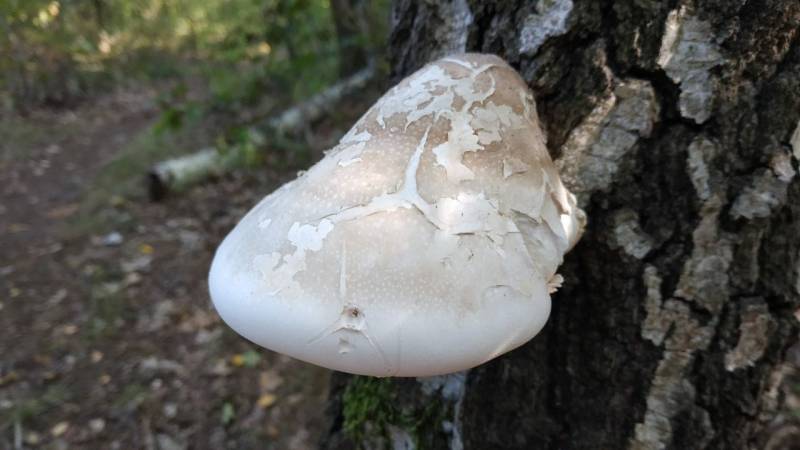
The birch polypore - miracle mushroom from the Stone Age
👉 The key facts from this guide
- The Birch Polypore is a versatile mushroom that grows on birch trees and is used in natural medicine.
- It has positive effects on the immune system and can be used as tea, plaster, or leather.
- The mushroom is edible when young, but bitter and can be poisonous if affected by mold.
- The Birch Polypore can be used to make paper and is not psychoactive.
- When collecting, only use young, undamaged specimens and watch out for mold.
- The Birch Polypore is available online, e.g., as powder or tincture.
The Birch Polypore – this frequently occurring white tree mushroom is versatile and has been used by humans for thousands of years.
Today, I'll show you how to find it and how to use it in the outdoor area.
Let's get started.
The Facts about Birch Polypore
- Edibility: The Birch Polypore is edible when young, although bitter in taste.
- Odor: Mushroom-like and slightly bitter.
- Fruiting body: White, turning grey/brown with age.
- Pores: Tiny, white pores underneath the mushroom.
- Flesh: White and firm.
- Habitat: Grows on dead, damaged or weak birch trees.
- Possible confusion: This distinctive mushroom is difficult to confuse with others, as it only grows on birch trees.
- Occurrence: Very common.
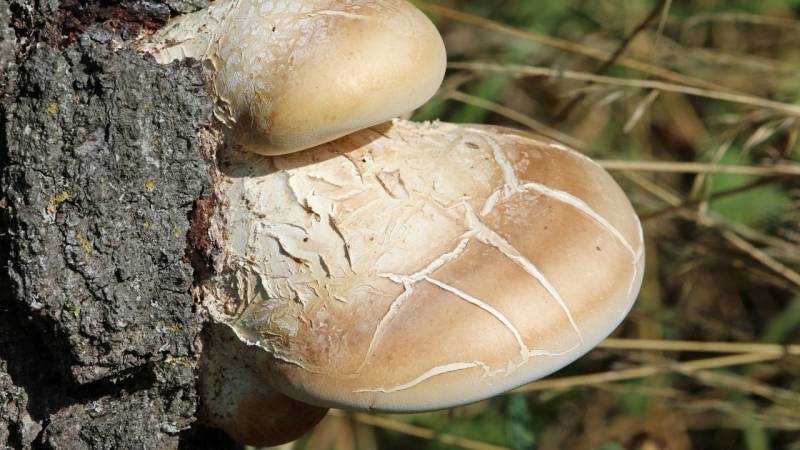
Additional facts about Birch Polypore
The Birch Polypore (Piptoporus betulinus) is a parasite for live trees, as it slowly kills them and then lives on the dead tree for many years. The mushroom grows – as the name suggests – exclusively on birch trees, but can be artificially introduced into other tree species.
It induces brown rot in the birch, which destroys the tree's cell structure. Living trees eventually fall, as they become unstable due to the rot. On the ground, the mushroom then decomposes the tree with further fruiting bodies, until after many years only humus remains.
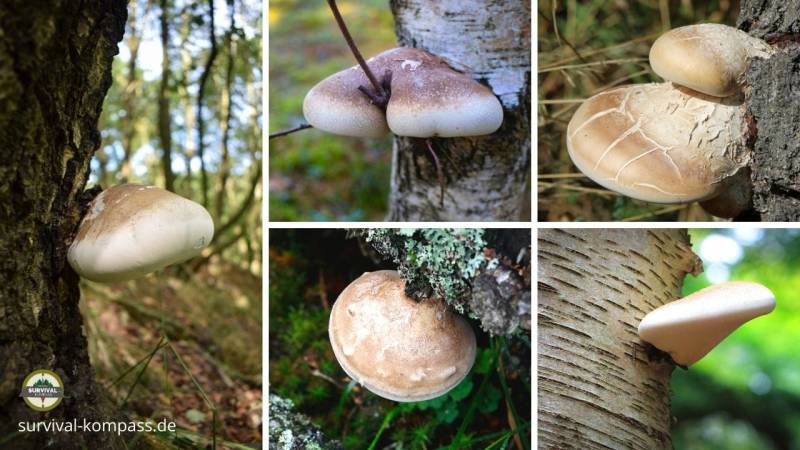
It has long been known that the Birch Polypore is used for medicinal purposes (all information given in this guide is only partly scientifically confirmed by corresponding studies).
It works as a means for the immune system, as an antiseptic for wound cleaning and healing promotion, or as an anti-inflammatory and hemostatic plaster.
In 1991, Austrian hikers discovered a frozen corpse in the Tyrolean area of the Italian Alps - Ötzi, a 5300-year-old mummy.
Ötzi had two Birch Polypores with him, and he also had a parasitic intestinal worm called whipworm. This intestinal worm can be cured with Polypolic acid, one of the substances contained in the Birch Polypore.
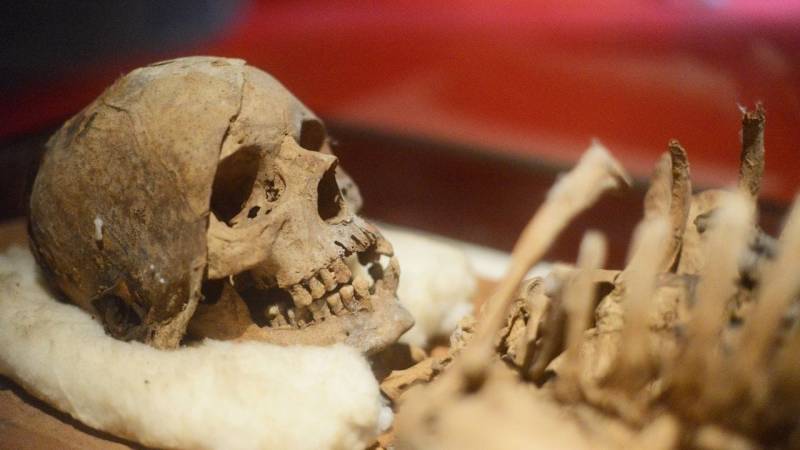
Furthermore, the fungus supported people in the Bronze Age in making and transporting fires. The Birch Polypore is a good tinder in its dry state, where often just a spark is enough.
You can also transport embers wonderfully with it, because the fungus smolders for a long time. This saved our ancestors from having to ignite a fire again with a flint and an iron or with the fire bow drill.
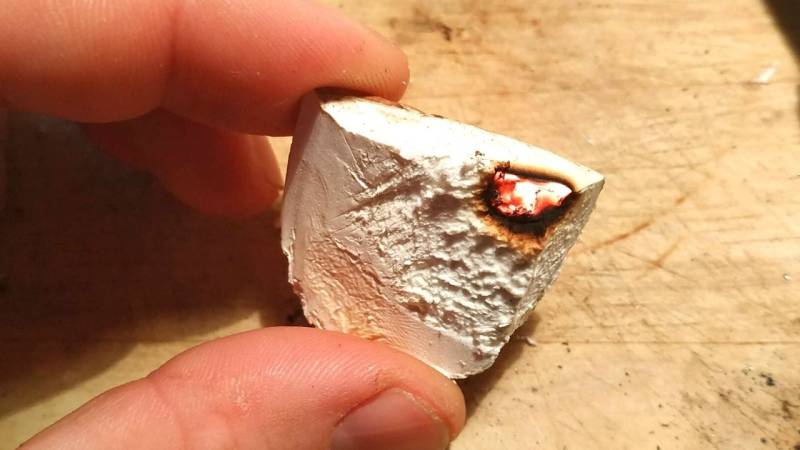
Here's a short video on how to make fire with the Birch Polypore mushroom.
I'll help you with making fire, that's why I wrote the book "Die Feuer-Fibel (in German)".
Identifying the Birch Polypore mushroom
You can find the Birch Polypore on birch trees throughout Germany and all over the world. Here's a checklist for identifying it safely:
- It grows only on weakened, dead, and fallen birch trees
- The cap surface is white in young mushrooms and brownish in older ones
- The underside is always completely white
- It has a strong, pungent mushroom smell
- It's never slimy, even after rain
Note: Please only collect young fruiting bodies, as the old ones can be moldy. Here's a picture of the Birch Polypore in different stages for your reference:
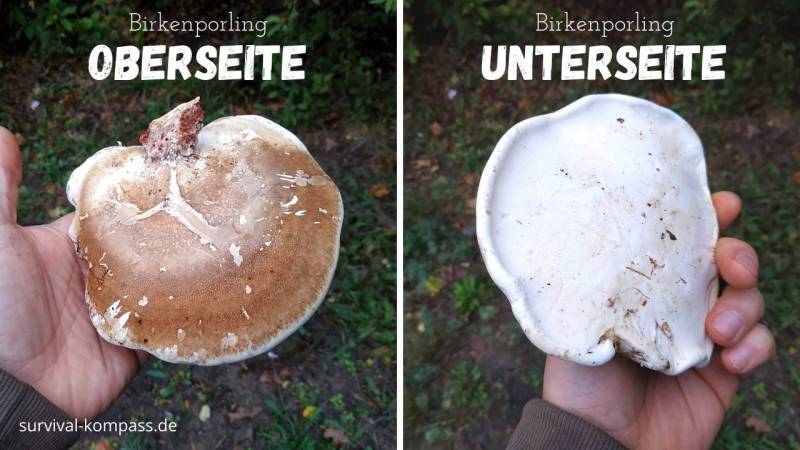
What the Birch Polypore can do for your health
I'm a big believer in using as many natural remedies as possible. Why rely on synthetic treatments when nature provides us with so many fantastic solutions?
The Birch Polypore contains chemical compounds that can provide strong health support.
With modern research, it's becoming clear that the Birch Polypore is an important mushroom that needs to be researched more. Tests have been conducted, and so far, the following results have been achieved.
- Strengthen the immune system - The tea made from Birch Polypore is said to strengthen the immune system and thus protect against illnesses.
- Relieve inflammation - Due to its anti-inflammatory properties, the tea can be helpful in inflammatory conditions such as rheumatism or arthritis.
- Lower blood pressure - A study found that regular consumption of Birch Polypore tea can lead to a reduction in blood pressure.
- Lower cholesterol - There are indications that the tea can also lower cholesterol levels.
- Antioxidant effect - Birch polypore contains antioxidants that can protect the body against free radicals.
This is how you prepare Birch Polypore tea:
- Cut the mushroom into small pieces or use already dried mushrooms
- Heat water in a pot and add the mushroom pieces
- Boil the tea for about 30 minutes and then let it cool down
- Strain the tea and drink it warm or cold
Depending on your preferences, you can also sweeten the tea with honey or lemon juice. Have fun trying it out!
- Improves hair growth
- Relieves digestive problems
- Helps with heartburn
- Has a calming and balancing effect
- Eliminates fatigue
- Has worm-driving properties
- Effective against parasite infestation
- Mild laxative
- Helps with respiratory diseases
- Has pain-relieving effects
- Helps with acne and impure skin
- Effective against food allergies
- Effective against gastritis, migraines, and depression
Many users have achieved great success with Birkenporling for stomach pain in particular.
A tea made from Birkenporling also helps prevent colds, such as sore throat and sinusitis, asthma, and bronchitis.
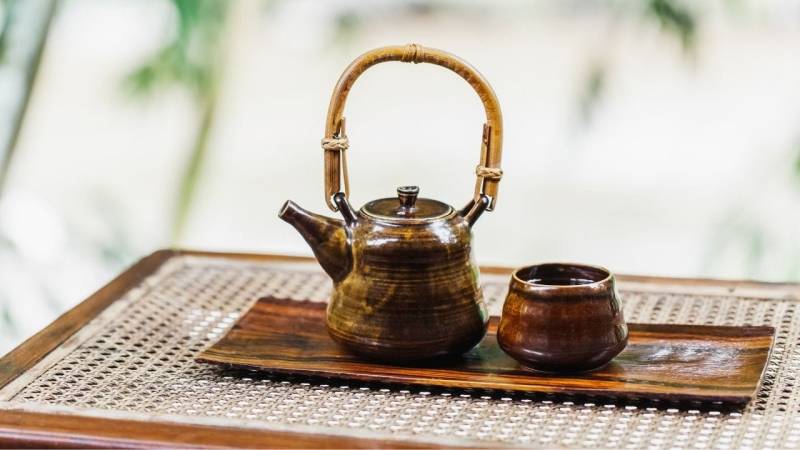
However, it is important to note that there is no scientific evidence for the health benefits of Birkenporling and further studies are needed to confirm its effectiveness.
Drying Birkenporling
To dry Birkenporling, cut it into 3-5 mm thick slices. Then dry the slices on your heater or in the sun.
Dry means: When you break a piece, it snaps.
If it doesn't snap and isn't dry, dry the slices in the oven with the door slightly open (use a wooden spoon to keep it open).
Once done, you can chop the slices into small cubes and further process them into powder (e.g. with a coffee grinder).
When completely dry, the slices, cubes, and powder can be stored for years.
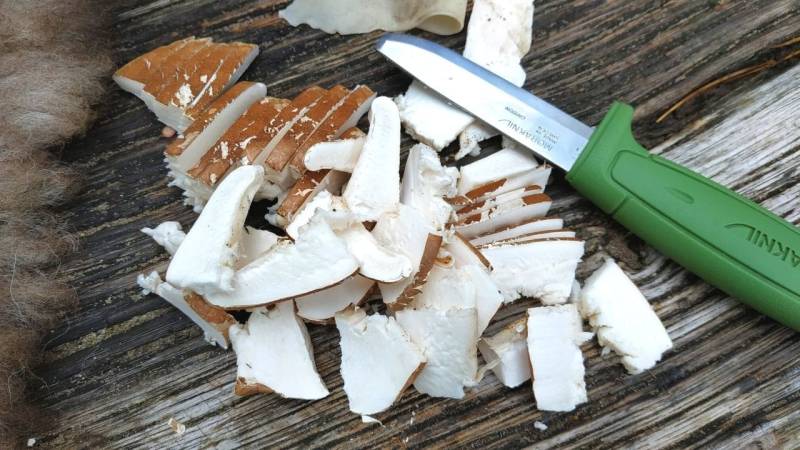
Preparation & Application: How to make chaga tea:
- Add 1 to 3 grams of dried chaga to about 300 ml of water.
- Bring the water to a boil and then let the mixture simmer for 20 to 30 minutes.
- Strain the grey-green liquid through a sieve.
- Ready to serve.
Instructions: Making a Chaga Mushroom Bandage
As you now know, the active ingredients in the mushroom help stop bleeding and are anti-inflammatory.
This makes the mushroom an excellent material for making your own bandages.
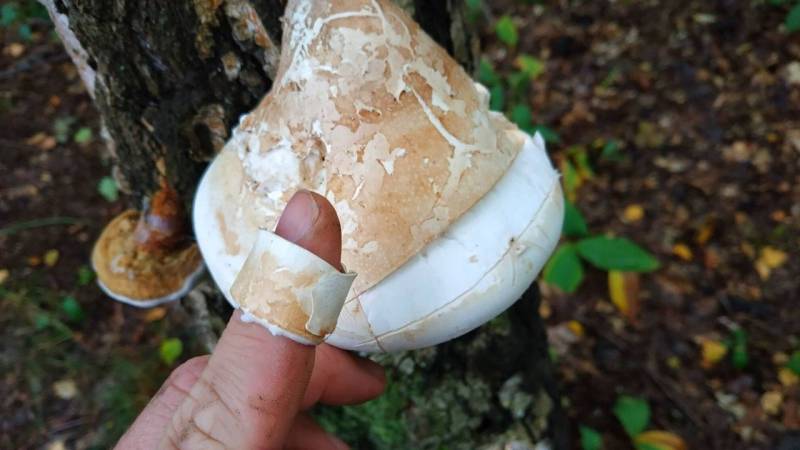
Tip: Do not suck on the wound. Your mouth is full of bacteria, and this will do you no good.
It's best to make a bandage from the underside of the mushroom. Carefully cut a strip from the pores, and you'll have a blood-stopping antimycotic, an antiseptic, and a self-adhesive bandage.
Here's a video on how to make it:
When applying, gently pull and then press together, and the chaga mushroom bandage will stay in place on its own.
There are other alternatives, like using resin, but a chaga mushroom bandage is neat, clean, and less sticky.
Isn't that amazing? It's much better than what you can get at the pharmacy.
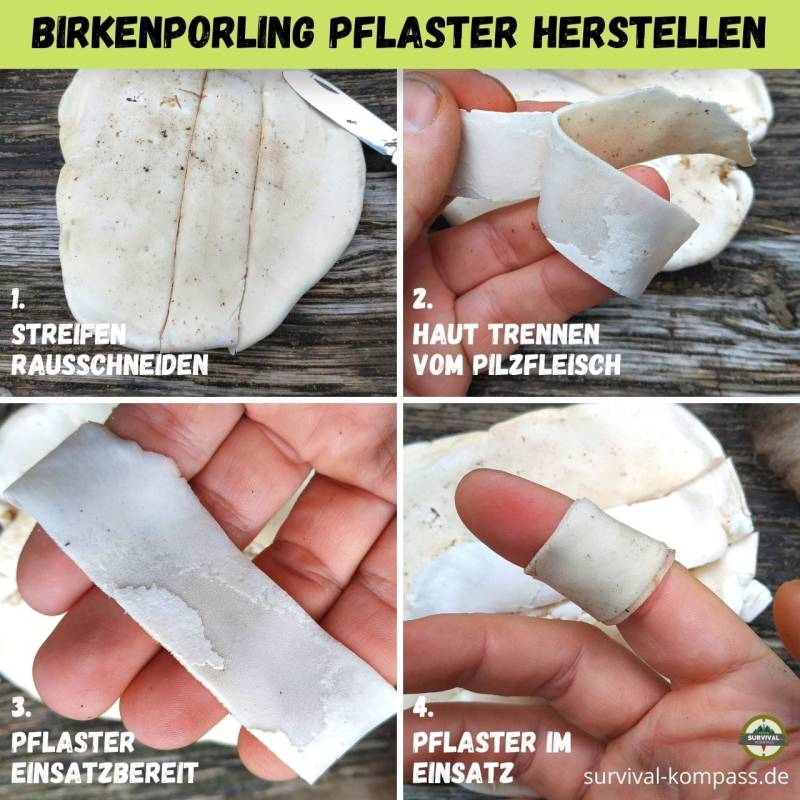
Alternatively, you can make a plaster for corns and blisters from the flesh of the Birch Polypore. Use the flesh to cut out a donut shape, and place it over the corn or blister.
Instructions: Building a strop from the Birch Polypore
In English-speaking countries, the mushroom is also known as the Razor Strop Fungus, because of its use as a strop.
And that's exactly what you can use the Birch Polypore for – as a strop. An excellent function for us outdoor enthusiasts.
Old barber shops used to cut a strip from the underside of the mushroom and dry it. The strip then becomes leathery and hard.
They would then attach the strip onto a flat wooden board, and use it to hone their razors for that perfect finish.
I'm not sure if they knew that they were also giving their blades an antiseptic, antifungal, and blood-stopping effect.
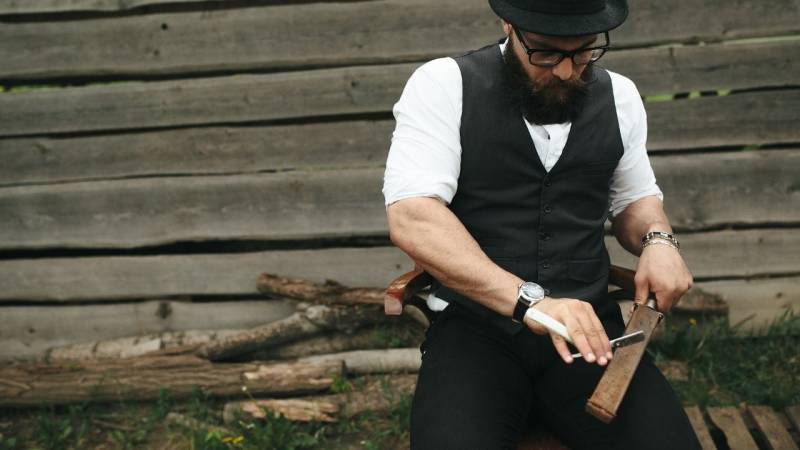
And you can make one like our ancestors did.
- Find a large Birch Polypore
- Cut out a large piece and dry it
- Stretch it on a flat wooden board
Instructions: Making paper from the Birch Polypore
Did you know that you can make paper from almost any mushroom? It's incredible, isn't it? When I first heard about it, I had to try it out.
And this is what I came up with: paper made from the Birch Polypore.
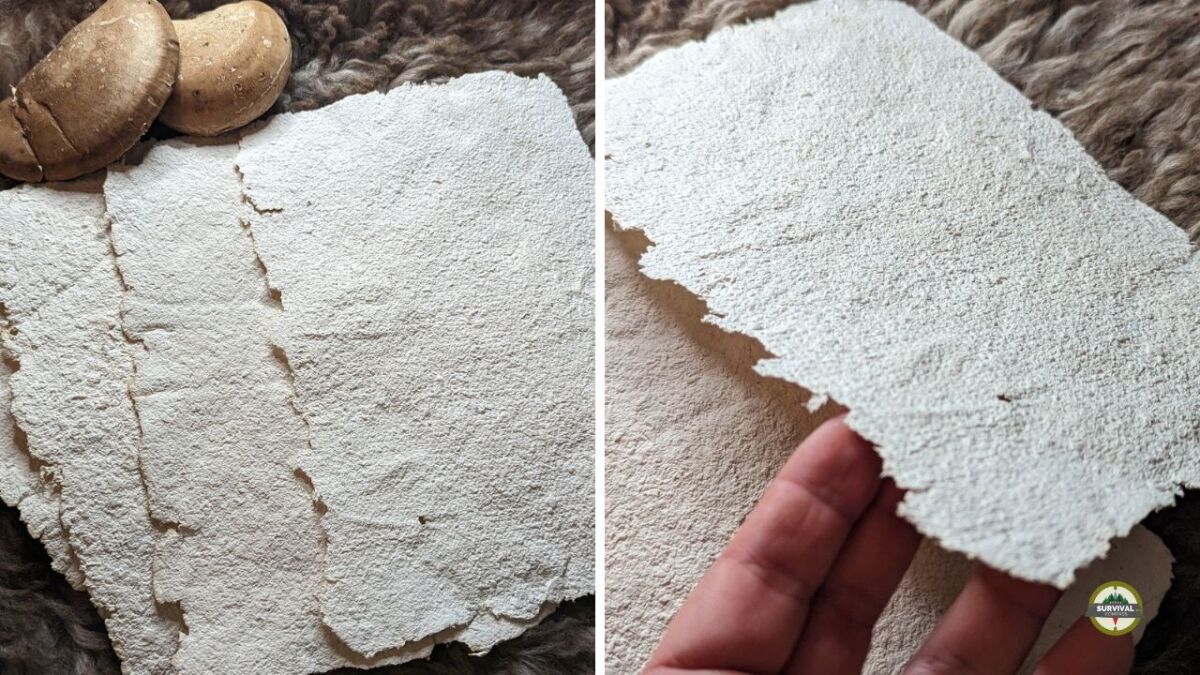
And this is how you make the paper:
- Collect Birch Polypore by plucking them off birch trees. Make sure the polypores are fresh and undamaged. The ideal time is autumn, after which they will become old. However, I have also found good specimens in December.
- Thoroughly wash the Birch Polypores under cold water to remove any dirt or other impurities. Remove everything on the Birch Polypore that is dark.
- Cut the Birch Polypore as small as possible.
- Pulverize the Birch Polypores in a blender or food processor with water until they are a fine paste. It should look like buttermilk/cream soup and have the consistency of it.
- Pour the mixture onto a grid or sieve. Here, a scoop frame is ideal. You can also build it yourself. (The task of the scoop frame is to represent a boundary for the paper mass.)
- Put the mass onto a dish towel, remove it from the scoop frame, and place another dish towel on top. Ideally, put paper under and over the dish towels to soak up the liquid.
- Squeeze everything together for a few minutes. It can also be half an hour if you have time.
- Store the wet paper with the dish towel underneath on a flat surface.
- Let the mass dry until it is firm enough to be removed from the dish towel. During the process, it can also be pressed, but make sure it dries, otherwise, mold will appear.
- Place the paper on a clean, flat cloth and iron it with a moderately hot iron until it is smooth and wrinkle-free.
It is possible to make paper from almost all types of mushrooms by processing them into a paste and then pouring them onto a grid or sieve to drain excess water.
However, keep in mind that the quality and strength of the paper may depend on the type of mushroom you use.
Is the Birch Polypore psychoactive?
The Birch Polypore is not psychoactive. If you experience consciousness-altering states, call a doctor. Psychoactive effects are symptoms of poisoning. Then the Birch Polypore was contaminated with other substances, such as other mushrooms.
All polypore mushrooms are safe for humans.
Can the Birch Polypore be poisonous?
The Birch Polypore is poisonous if it is infected with mold. This occurs in old specimens that are six to ten months old. The mold on the Birch Polypore is not easily recognizable from the outside because the mushroom looks gray and white.
Otherwise, it is possible that you have mistaken the Birch Polypore for another mushroom. Therefore, do not harvest mushrooms that are growing at the base of a birch tree.
What are the signs of poisoning?
- Vomiting
- Diarrhea
- Sweating
- Tachycardia
- Circulatory problems up to collapse, such as fainting
If one of these symptoms occurs, please call an ambulance immediately.
Important note: Please only collect mushrooms that you know and are sure of! Do not eat the Birch Polypore raw, but boil it. The tea is safe. Also, check the mushroom for mold. The Birch Polypore must smell fresh and mushroomy. If it smells musty, stay away. Never take unnecessary risks.
Are there any side effects of taking Birch Polypore?
I could not find any side effects on myself, nor after extensive research. The only thing that may be unpleasant is perhaps the slightly bitter taste when you boil too many mushrooms in your broth.
Can you buy Birch Polypores?
You can order Birch Polypores online, for example on Amazon or in other shops.
Or here as drops:
The Swiss army knife of mushrooms
I have written about the tinder fungus and the mushroom is already versatile and ingenious – but the Birch Polypore tops the range of applications for us nature lovers, bushcrafters, and survivalists.
How do you like the Birch Polypore? Did you know that the Birch Polypore is so versatile?
Write your opinion in the comments.
Have fun in the forest and don't forget:

Sources for the guide
Zum Weiterlesen:
- https://de.wikipedia.org/wiki/Birkenporling
- https://www.birkenporling.eu/
- https://www.passion-pilze-sammeln.com/tee_vom_birkenporling.html
- https://www.dgfm-ev.de/jugend-und-nachwuchs/kreativwerkstatt/papierschoepfen-aus-pilzen
- https://myko-kitchen.de/papierschoepfen
- https://namyco.org/paper_from_fungi_basics.php
- https://whisperingearth.co.uk/2015/02/15/birch-polypore-medicine-ancient-and-modern/
- https://www.thieme-connect.com/products/ejournals/abstract/10.1055/a-2531-5363?device=desktop&innerWidth=412&offsetWidth=412

Author of the guide
Martin Gebhardt
Hey, I'm Martin. On my blog, you will learn the basics and numerous details about living in the wild. I think survival, bushcraft and the good life in nature are the keys to happiness. Find me here on Instagram or on YouTube. You can find more about my mission on the About Me page.
Was this guide helpful?
330 people found this guide helpful.
4.99 out of 5 points (331 Ratings)
Comments (0)
This post may contain affiliate links. So if you click on the links and make a purchase, I will receive a small commission at no additional cost to you. Click here, to learn more about it.



